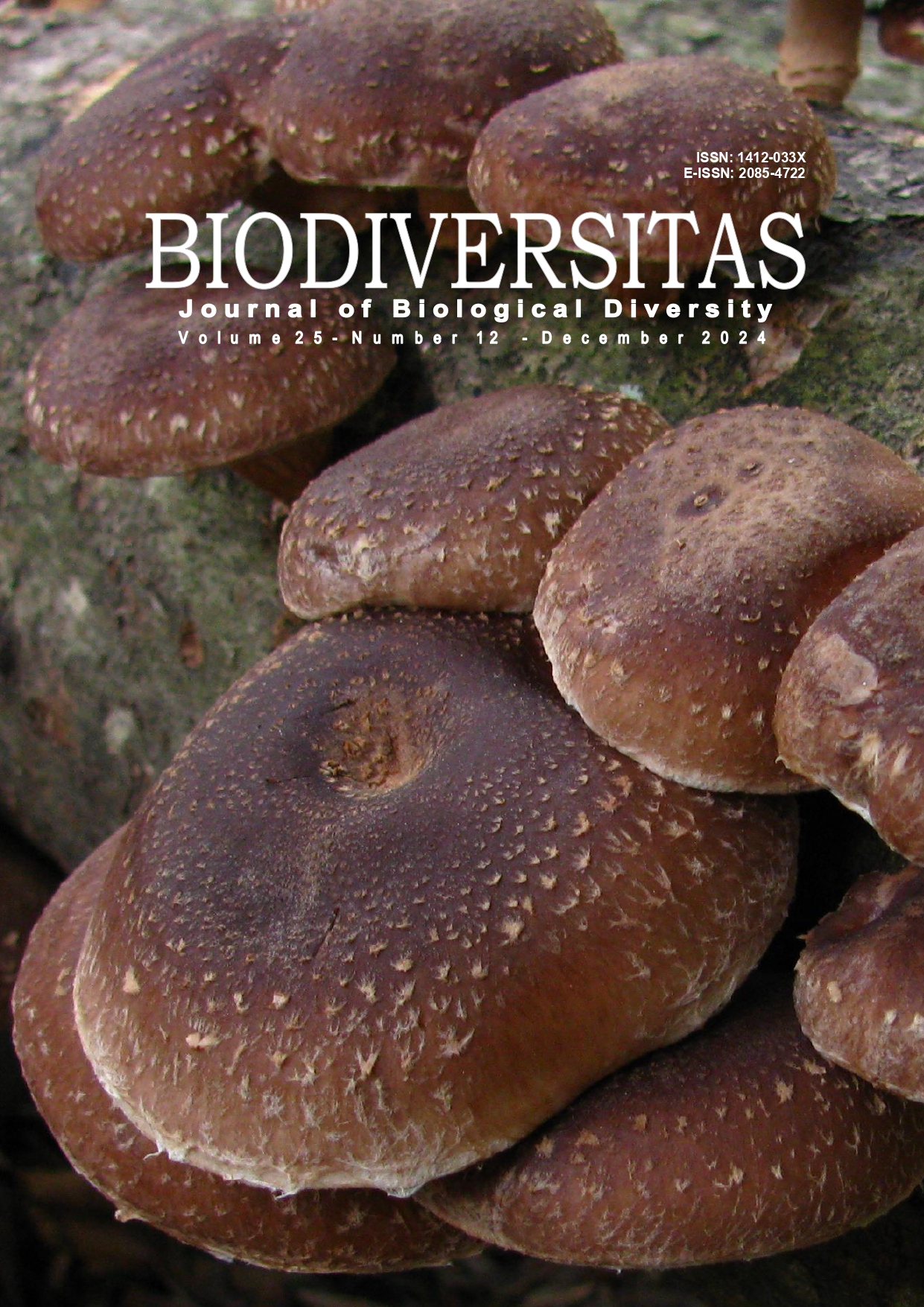Characterizing the chemical composition and variations of several medicinal plant leaves using 1H NMR Spectroscopy
##plugins.themes.bootstrap3.article.main##
Abstract
Abstract. Almahasheer H. 2024. Characterizing the chemical composition and variations of several medicinal plant leaves using 1H NMR Spectroscopy. Biodiversitas 25: 4971-4977. This study utilizes 1H NMR spectroscopy to characterize the chemical composition of nine medicinal plant leaves, focusing on spectral intensity differences across four distinct regions based on organic functional groups. The analysis revealed that the carbohydrate region (50-110 ppm) had the highest spectral intensity at 0.655374, indicating a predominant presence of cellulose. The aliphatic region (0-50 ppm) displayed an intensity of 0.222092, while the aromatic region (110-150 ppm) was lower at 0.047311. The carboxyl region (150-200 ppm) exhibited an intensity of 0.075224, reflecting lower concentrations of carboxyl compounds. Significant variations in chemical group ratios were observed among the samples. Circaea lutetiana exhibited the highest carbohydrate ratio (0.82), while Peganum harmala showed the lowest (0.48). Aromatic ratios were notably higher in P. harmala and Crataegus sp. (0.10) compared to Cassia senna and Ficus carica (0.01). Additionally, P. harmala had the highest aliphatic ratio (0.35), while C. senna exhibited the highest carboxyl ratio (0.12). The robust application of NMR spectroscopy enhances our understanding of phytochemical diversity. It highlights the diverse chemical profiles and potential functional adaptations of the studied plants, suggesting significant implications for their medicinal applications. This research aligns with Saudi Vision 2030, a vision that we, as a scientific community, seek to boost the agricultural sector’s role in the economy while encouraging sustainable practices and biodiversity conservation. By elucidating the molecular characteristics of these plants, we provide critical insights into their ecological roles and responses to environmental changes. Ultimately, this study advances sustainable resource management and fosters innovative applications in healthcare, nutrition, and the preservation of plant biodiversity in Saudi Arabia.

